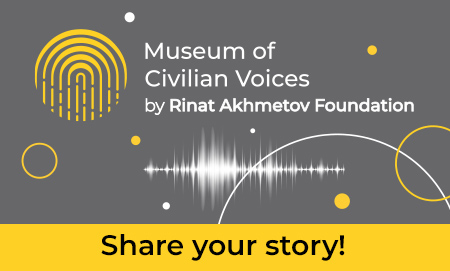To sympathize and act. BLOG by Oleksandr Vyshniakov, the director of Rinat Akhmetov Humanitarian Center

Now every child living in a war zone knows what it means to survive in a war and how difficult it is for his or her family to provide basic needs. It is even worse for those families who have lost their loved ones.
Our volunteers told one of a thousand similar stories. Mariinka district. In one of the villages there lived an old man with three little granddaughters. Over the past year, he lost his wife and his daughter, and now these children are his reason to live. And every day can be the last. Spending the nights in the basement under fire, having one product package for four, scanty social assistance. To survive the war and to raise his granddaughters are now the most important tasks for the pensioner.
Depressing, heavy stories are not the only indicator of how people live "there". Although they need to be known and remembered. No one should pass these people by.
My colleagues and I are accustomed to perceive the situation from two sides: sympathy and actions that do not contradict each other. The main thing is to help cover vital needs here and now.
Since 2014, we have conducted regular public opinion surveys, asking: what do people need most? Three years ago, people badly needed medications (45% of respondents), food (36%) and hygiene items (29%). 38% of the uncontrolled territories of the Donbas civilians said about their life situation: “It is impossible to endure this distressful situation anymore”.
Gradually, the humanitarian situation ceased to be this catastrophic. Hunger was avoided thanks to the combined efforts of humanitarian missions and volunteer initiatives. Yet, the distressful situation is still what the people experience here.
Within the entire period of the Center’s work we have delivered and issued to civilians more than 130 thousand tons of products. This is almost 12 million product packages. For three years, the Humanitarian Center reacted quickly to the needs and the changing situation, constantly introducing innovations and systematically taking measures in the following directions:
- expanding the product assistance geography to the entire “grey zone” and the front-line territories – where it seemed impossible to get. On both sides of the demarcation line, the aid was regularly received by more than half a million people;
- sending product convoys 3-4 times a week has made it possible to adjust system work on purchase, delivery and issue of products. People who received the kit knew firmly: they will necessarily receive the following one by coupon at the appointed time;
- updating the contents of the survival kits. Twice a year the contents were updated in accordance with the needs for useful products and micronutrients. The Center introduced the products necessary for some of the most vulnerable categories - from nursing mothers to babies and toddlers of 1-3 years.
Why do we continue?
According to the UN data, more than 3.8 million of the Donbas population need humanitarian aid. The situation is especially difficult in the villages on both sides of the demarcation line as well as in the “grey zone” - people there are sorely lacking products and survival means.
In November of 2017, the 307th convoy of Rinat Akhmetov Humanitarian Center with humanitarian assistance left for Donbas. The products are already being issued to the residents of the front-line and “grey” zones. The schedules of assistance issue in each settlement can be found on the Center website.




